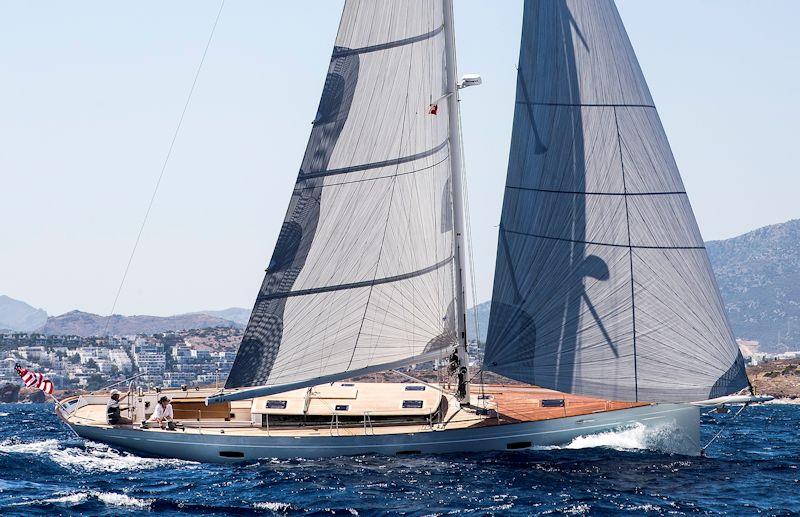
Calculating your sail areas - a guide by upffront.com
by Phil Anniss 21 Nov 2019 17:00 UTC

Calculating your sail area is often required when selecting new hardware © Facnor
Lots of equipment on board is load dependant and apart from length and ballast of the boat the primary driver is sail area. It is therefore unsurprising that a lot of hardware manufacturers use sail areas as a primary specification criterion.
This article gives you the key rig and sail dimensions plus the formulas you need to calculate your sail areas.
Key Rig data
I - Height of Foretriangle
Elevation of Forestay, measured down to elevation of main shrouds at sheer line.
J - Base of Foretriangle
Horizontal distance measured from front face of mast at deck to position of headstay at sheer line.
P - Mainsail Hoist
Elevation of upper mast band or maximum main halyard position, measured down to lower mast band or top of boom.
E- Mainsail Foot
Horizontal distance measured from aft face of mast at top of boom to boom band or maximum outhaul position.
Is - Height of Inner Foretriangle
Elevation of Forestay, measured down to elevation of main shrouds at sheer line.
Js - Base of Inner Foretriangle
Horizontal distance measured from front face of mast at deck to position of inner headstay at sheer line.
Py - Mizzen Mainsail Hoist
Elevation of upper mast band or maximum main halyard position, measured down to lower mast band or top of boom.
Ey - Mizzen Mainsail Foot
Horizontal distance measured from aft face of mizzen mast at top of boom to boom band or maximum outhaul position.
ISP - Elevation of Spinnaker Halyard
Measured down to elevation of main shrouds at sheer line.
SPL - Spinnaker Pole Length
STL - Spinnaker Tack Length
Horizontal distance measured from fron
t face of mast at deck, forward and horizontally to position of spinnaker tack attachment point.
Key Sail measurement data
MHB - Main Head Board width
MUW - Main Upper Width at 7/8 height
MTW - Main Third Width at 3/4 height
MHW - main Half Width at 1/2 height
MQW - Main Quarter Width at 1/4 heigh
HUW - Headsail Upper Width at 7/8 height
HTW - Headsail Third Width at 3/4 height
HHW - Headsail Half Width at 1/2 height
LL - Luff Length
LP - Luff Perpendicular (shortest dist
ance from clew to luff)
SLE - Spinnaker Leech
SLU - Spinnaker Luff (both the same on a symmetric spinnaker)
SHW - Spinnaker Half Width (distance from mid-point SLU to mid-point SLE)
SF - Spinnaker Foot
SLE - Spinnaker Leech
SLU - Spinnaker Luff
SHW - Spinnaker Half Width (distance from mid-point SLU to mid-point SLE)
SF - Spinnaker Foot
Basic Sail Area calculations
Mainsail:
P x E / 2 (no roach)
P x E x 0.585 (with roach)
Mizzen:
Py x Ey / 2 (no roach)
Py x Ey x 0.585 (with roa
ch)
Jib / Genoa:
(I X J) / 2 x LP%
Example LP%: Full size genoa 1 - 150%, genoa 2 - 130%, genoa 3 - 105%, working jib - 85-95%
Spinnaker:
(SL x (SHW + SF) / 2) x 0,95
More detailed area calculations
Sail area is a big thing for rating certificates. It is a hot area for debate with different rating organisations having their own small variations. However, despite their subtle differences they have similar principles and listed below are the Rated sail areas for the Offshore Rating Congress (ORC).
Summary
Basic main and headsail sail areas can be calculated from simple rig data whereas for a more accurate sail area calculations you need detailed measurements of your sail which you can either measure yourself or ask your sailmaker to supply.
If you have any questions about sail areas or the implications for specifying any of your sailing hardware or rigging please Contact upffront.com online.